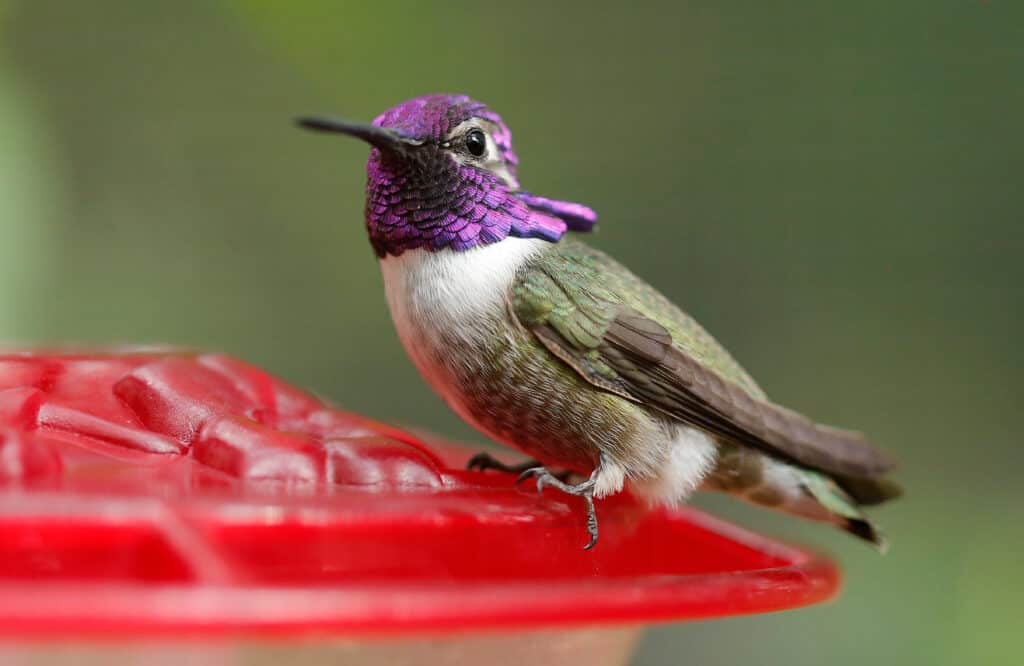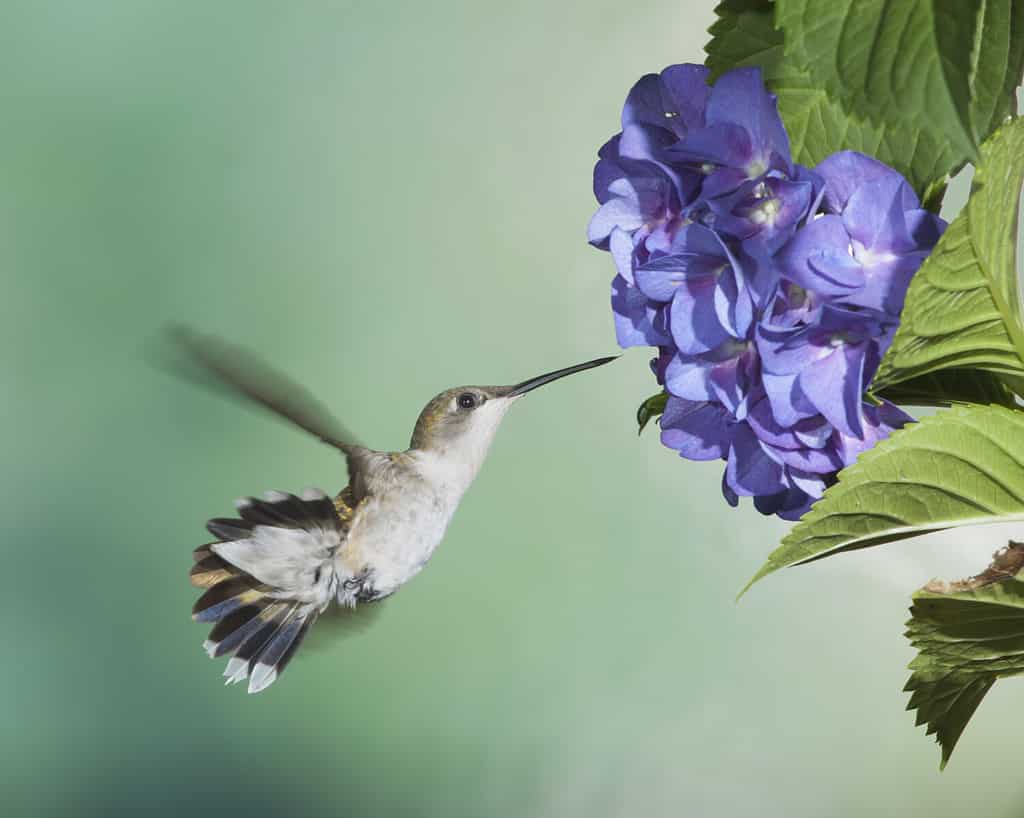The flutter of their wings catches your attention when they pass you by but their elongated bills, small size, and ability to fly in all directions keep you mesmerized. Perhaps you have a blooming garden that’s caught their attention. Maybe you’ve set out hummingbird feeders to feed your flying friends. But have you noticed they gravitate to a certain color over others? Discover why hummingbirds love the color red so much!
Hummingbird Overview
Part of the avian family Trochilidae, hummingbirds offer a glimpse into a tiny but mighty world. They offer delight for the eyes as they move elegantly, letting the sun’s rays catch the dazzling colors of their metallic feathers. Although they can weigh up to 20 grams, some species are exceptionally tiny, coming in at only 1.95 grams (like the bee hummingbird of Cuba). You can imagine how small the eggs hummingbirds lay are — they’re pea-sized and well-protected in their small nests.
Perhaps the most stunning feature of the hummingbird is its ability to fly in all directions — even to hover using the power of speedy wing flaps! Being that they’re so small, they can achieve great feats in the air, hurtling their tiny bodies around with impressive agility. Not only do they impress with their agility in flight, but they’re also able to reach incredible speeds of up to 45 miles per hour when taking a courtship dive. When migrating, they can remain in flight for up to 20 hours, expertly using the wind to keep them on schedule.

Hummingbirds can reach impressive speeds and can travel for up to 20 hours straight.
©Rick Scuteri/Shutterstock.com
With such intense energy expenditure, hummingbirds require some serious rest. If food conditions are scarce or the temperatures call for it, hummingbirds enter an ultra-deep state of torpor. It’s like sleep and during it, the hummingbird’s metabolic functions slow considerably and their body temperature lowers. Torpor isn’t reserved for certain times of the year and is an accessible state on a daily basis. This ability to slow down and rest their bodies ensures their survival when external conditions require it.
Why Hummingbirds Love the Color Red So Much
Hummingbirds are highly active creatures, which means they need plenty of energy to keep them on the go. To find sustenance, they look for nectar in flowers or other food sources, like sugar water in hummingbird feeders. The beauty of a hummingbird’s eyesight is how well it’s adapted to quickly find certain hues in an otherwise busy rainbow of colors. It all depends on the hummingbird’s retina. You see, within the retina, there are pigmented cones that serve to filter out the intensity of certain darker hues like blues.
But just as they work to filter out some darker colors, they also highlight certain hues, of which red is included. They are also extra sensitive to yellow and orange tones. Despite this natural inclination toward the color red, hummingbirds aren’t fools. They are interested in the nectar provided by the flower, and if they find a more abundant nectar source, they gravitate that way regardless of the color of the flower. Researchers discovered the hummingbird’s ability to learn quickly and switch its preference after changing how much nectar was in flowers of different colors.

Although hummingbirds display a preference for red flowers, ultimately, they go where the nectar is.
©R.C. Bennett/Shutterstock.com
What Are Other Hummingbird Attractants?
Lean into the hummingbird’s natural preference for red and plant red, tubular flowers in your garden to attract them. As a hummingbird surveys an area from an aerial perspective, the color red stands out to them more than others. Then they can dive down and investigate — so long as there is nectar, they are going to linger. However, aside from red flowers, you can also try:
Sugar Water
Hummingbirds are looking for a food source and you can make one yourself! Prepare a mixture of water and sugar and set it outside for your tiny, fluttering friends. Although you can purchase an already-made concoction, it’s best if you put the mixture together yourself. The ratio is one part white sugar with four parts water. These two simple ingredients make for a delicious treat and can keep hummingbirds coming back to your yard when they need a boost!
Birdbaths
Just as hummingbirds need plenty of nectar for survival, they also need plenty of water for hydration (and for keeping clean!). If you set out a birdbath, hummingbirds may fly on over. To make it extra attractive for these tiny birds, set up a fountain so hummingbirds can enjoy the misting effect. This doesn’t just make it more attractive to hummingbirds, but it also dissuades mosquitoes from approaching because those pesky insects only like standing water.
The photo featured at the top of this post is © Ondrej Prosicky/Shutterstock.com
Thank you for reading! Have some feedback for us? Contact the AZ Animals editorial team.







